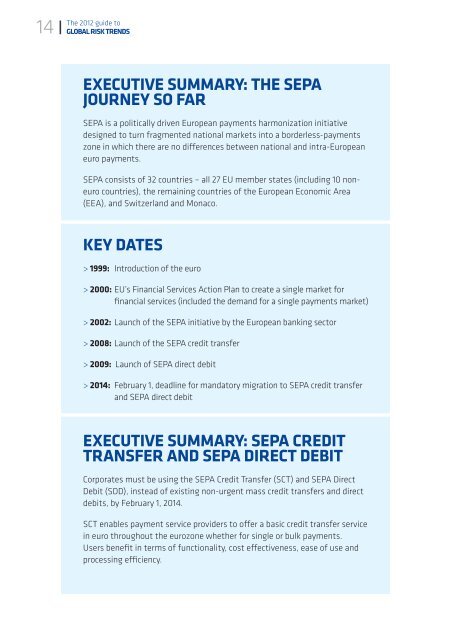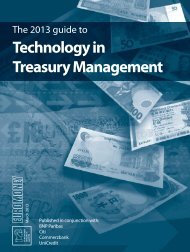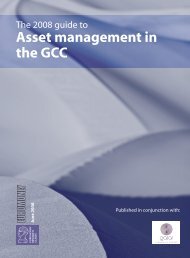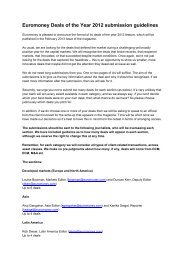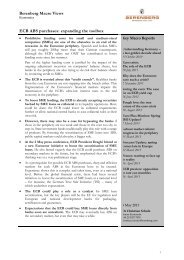Download guide (PDF) - Euromoney
Download guide (PDF) - Euromoney
Download guide (PDF) - Euromoney
You also want an ePaper? Increase the reach of your titles
YUMPU automatically turns print PDFs into web optimized ePapers that Google loves.
14<br />
The 2012 <strong>guide</strong> to<br />
GLOBAL RISK TRENDS<br />
ExECUTIvE SUMMARy: THE SEPA<br />
jOURNEy SO FAR<br />
SEPA is a politically driven European payments harmonization initiative<br />
designed to turn fragmented national markets into a borderless-payments<br />
zone in which there are no differences between national and intra-European<br />
euro payments.<br />
SEPA consists of 32 countries – all 27 EU member states (including 10 noneuro<br />
countries), the remaining countries of the European Economic Area<br />
(EEA), and Switzerland and Monaco.<br />
KEy DATES<br />
> 1999: Introduction of the euro<br />
> 2000: EU’s Financial Services Action Plan to create a single market for<br />
financial services (included the demand for a single payments market)<br />
> 2002: Launch of the SEPA initiative by the European banking sector<br />
> 2008: Launch of the SEPA credit transfer<br />
> 2009: Launch of SEPA direct debit<br />
> 2014: February 1, deadline for mandatory migration to SEPA credit transfer<br />
and SEPA direct debit<br />
ExECUTIvE SUMMARy: SEPA CREDIT<br />
TRANSFER AND SEPA DIRECT DEBIT<br />
Corporates must be using the SEPA Credit Transfer (SCT) and SEPA Direct<br />
Debit (SDD), instead of existing non-urgent mass credit transfers and direct<br />
debits, by February 1, 2014.<br />
SCT enables payment service providers to offer a basic credit transfer service<br />
in euro throughout the eurozone whether for single or bulk payments.<br />
Users benefit in terms of functionality, cost effectiveness, ease of use and<br />
processing efficiency.


